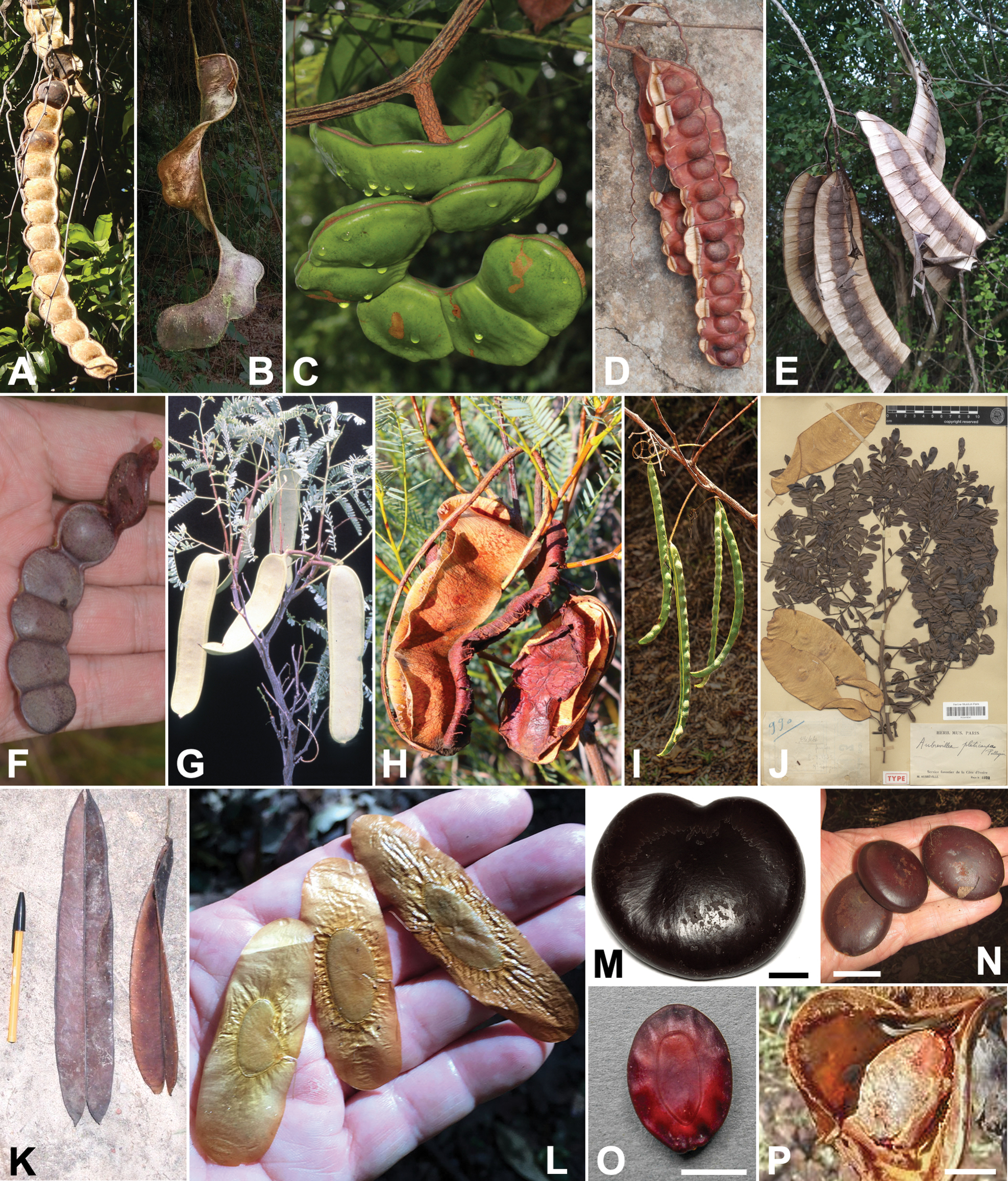
|
||
|
Entada clade variation in fruits and seeds A Entada rheedei Spreng., mature, gigantic, torulose, slightly curved, segmented craspedium with woody endocarp, India B Entada gigas (L.) Fawc. & Rendle, mature, laxly spirally twisted, segmented craspedium, Costa Rica C Entada spiralis Ridl., immature, tightly spirally twisted, segmented craspedium, Singapore D Entada africana Guill. & Perr., mature, segmented craspedia, distinctly umbonate over seeds, with exocarp peeling away, Togo E Entada polystachya (L.) DC., mature, segmented craspedia, slightly umbonate over seeds, with exocarp already shed, Costa Rica F Entada dolichorrhachis Brenan, mature, small, torulose, slightly curved, segmented craspedium, Zambia G Entada burkei (Benth.) S.A. O’Donnell & G.P. Lewis, immature craspedia, not segmented, South Africa H E. burkei, mature craspedia, not segmented, entire valves breaking away from replum, exocarp peeling away, South Africa I Entada goetzei (Harms) Harms, immature, elongate craspedia, not segmented, distinctly umbonate over seeds, Mozambique J Aubrevillea platycarpa Pellegr., papery, indehiscent fruits with twisted bases (holotype A Aubreville 990, MNHN-P-P00418246), Côte d’Ivoire K Piptadeniastrum africanum (Hook.f.) Brenan, coriaceous pods, dehiscent along single suture, Democratic Republic of Congo L P. africanum, flattened, oblong seeds surrounded by broad, membranous wing, with funicle attached at middle of long axis of seed, Uganda M E. gigas, large, laterally compressed, cordate seed without pleurogram, collected in beach wrack, USA N E. rheedei, large, laterally compressed, globular seeds without pleurogram, South Africa O E. africana, laterally compressed, elliptic seeds with closed pleurogram, Togo P E. burkei, globular seed without pleurogram, South Africa. Scale bars: 1 cm (M); 2 cm (N); 5 mm (O, P). Photo credits A Dinesh Valke, iNaturalist (https://www.inaturalist.org/photos/159405372) B Pedro Blanco, iNaturalist (https://www.inaturalist.org/photos/181372721) C Cerlin Ng CC BY-NC-SA 2.0 D B Eichhorn, Dressler et al. (2014) E Marvin López M, iNaturalist (https://www.inaturalist.org/photos/181531329) F W McCleland, Dressler et al. (2014) G P van Wyk; H tjeerd, iNaturalist (https://www.inaturalist.org/photos/64689073) I BT Wursten, Hyde et al. (2022) J MNHN (2022) (CC BY 4.0) K P Latham, Dressler et al. (2014) L David Bygott, iNaturalist (https://www.inaturalist.org/photos/62615168) M Robb Deans, iNaturalist (https://www.inaturalist.org/photos/2611187) N Ricky Taylor, iNaturalist (https://www.inaturalist.org/photos/44440338) O B Eichhorn, Dressler et al. (2014) P Joseph Heymans, iNaturalist (https://www.inaturalist.org/photos/123571608). |